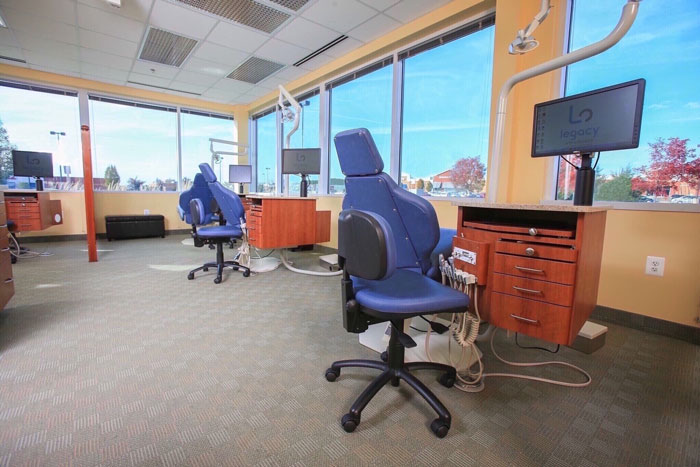Legacy Orthodontics for Dummies
Legacy Orthodontics for Dummies
Blog Article
The Greatest Guide To Legacy Orthodontics
Table of ContentsAbout Legacy OrthodonticsExcitement About Legacy Orthodontics8 Simple Techniques For Legacy OrthodonticsThe Best Guide To Legacy OrthodonticsThe Only Guide to Legacy Orthodontics
In enhancement, we use adjustable therapy routines, adaptable repayment choices and a fun, enjoyable experience.An orthodontist is a dental professional trained to diagnose, stop, and deal with teeth and jaw abnormalities. They fix existing problems and are educated to identify issues that might create in the future. Orthodontists deal with people of all ages, from kids to adults. People frequently associate a perfect smile with great health and wellness.
Malocclusion, or misaligned teeth, can cause dental issues, including dental cavity, gum tissue illness, and challenging or unpleasant eating. However not every person is birthed with straight teeth. If you have a negative bite or big rooms between your teeth, you may intend to consult a dental practitioner concentrating on orthodontic care.
Not known Factual Statements About Legacy Orthodontics
( Image Credit Report: DigitalVision/Getty Images) Orthodontists use dealt with and detachable dental devices, like braces, retainers, and bands, to transform the placement of teeth in your mouth. Orthodontic treatment is for dental abnormalities, consisting of: Misaligned teethBite problems, like an overbite or an underbiteCrowded teeth or teeth that are too much apartJaw misalignmentThe objective of orthodontic treatment is to improve your bite.
A healthy bite ensures you can eat, eat, and talk appropriately. While you could consider orthodontists as primarily for kids or teens who need dental braces, they can correct oral issues at any kind of age. Orthodontists attend university, oral school, and orthodontic institution. After college graduation, they invest 2 or 3 years in an orthodontic residency program.
All orthodontists are dental experts, yet not all dentists are orthodontists. Orthodontic residency programs use intensive, focused direction for dental experts. They concentrate on two areas: Just how to correctly and securely move teeth Exactly how to appropriately direct advancement in the teeth, jaw, and faceOnce an orthodontist has completed training, they have the choice to come to be board licensed.
Legacy Orthodontics Things To Know Before You Get This
Malocclusion leads to tooth overcrowding, an irregular jaw, or irregular bite patterns. Malocclusion is usually treated with: Your orthodontist attaches steel, ceramic, or plastic square bonds to your teeth.
Some people need a headwear to aid relocate teeth into line with stress from outside the mouth. A retainer is a personalized gadget that keeps your teeth in area.
They're usually used on youngsters. They can produce added room in the mouth without having to draw teeth. If you have a significant underbite or overbite, you might need orthognathic surgical procedure (also called orthodontic surgical treatment) to extend or shorten your jaw. Orthodontists utilize cables, medical screws, or plates to support your jaw bone.
You might need to see an orthodontist if you have: Crowding or otherwise sufficient space for every one of your teethOverbite, when your top teeth come by your bottom teethUnderbite, when your base teeth are too far forwardSpacing or issues with gapsCrossbite, which is when your upper teeth fit behind your bottom teeth when your mouth is closedOpen bite or a vertical gap between your front base and top teethMisplaced midline, when the facility of your base and top teeth do not align Fixing a dental malocclusion can: Make attacking, chewing, and speaking easierImprove the balance of our face and your general appearanceEase discomfort from temporomandibular joint problemsDifferent your teeth and make them simpler to cleanse, helping avoid leesburg clear braces tooth decay or tooth cavities It's often a dental practitioner that initially notifications misaligned teeth during a routine exam.
See This Report on Legacy Orthodontics

Throughout your initial orthodontic appointment, you'll likely have: An oral examPhotos taken of your face and smileDental X-raysPanoramic (360 level) X-rays of your face and headImpressions to create mold and mildews of your teethThese tests will help your orthodontist recognize just how to wage your treatment. leesburg braces. An orthodontist is a dental practitioner that's had training to treat your teeth and jaw
An orthodontist is focused on your bite, so something like a damaged tooth would be handled by a dental practitioner. Orthodontists are focused on your bite, or the means your teeth fit together, and the straightness of your teeth.
Ever before asked yourself how stars constantly seem to have completely straightened teeth? Orthodontists are dental specialists that focus on correcting abnormalities in the teeth and jaws.
Little Known Questions About Legacy Orthodontics.

While braces are the most frequently acknowledged orthodontic therapy, orthodontists have a varied toolkit at their disposal. The certain approach selected depends on the intensity of the situation, the client's age, and specific preferences. These reliable braces utilize a system of brackets bound to the teeth and connected by wires.
Clear aligners, like Invisalign, are a prominent alternative for clients seeking a more discreet therapy alternative. These removable trays are tailor-made to considerably move the teeth's setting. Headwear may be utilized combined with braces or aligners to apply extra targeted forces, especially for fixing jaw disparities. In cases of slim jaws, palatal expanders can be utilized to develop area for appropriate tooth positioning.
Report this page